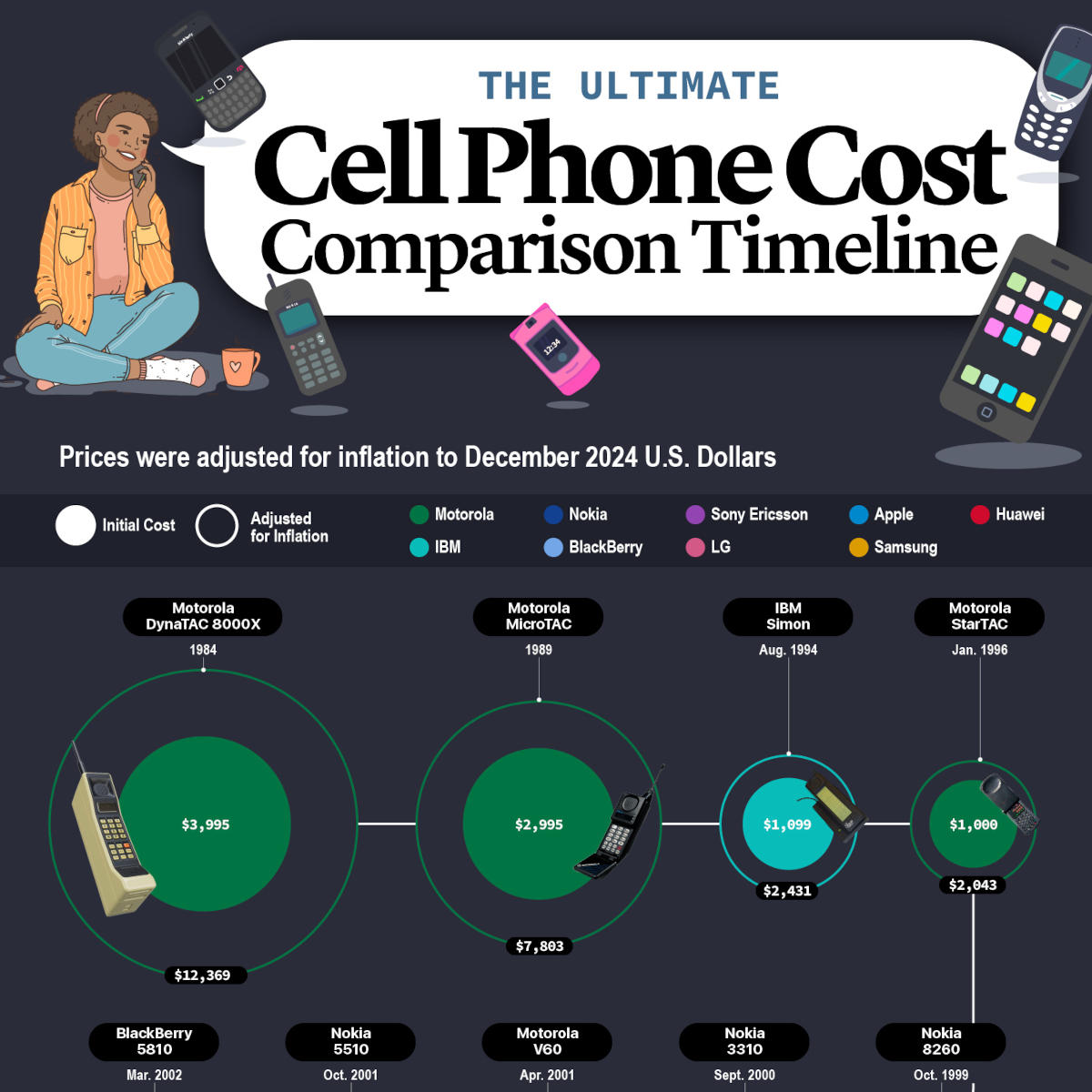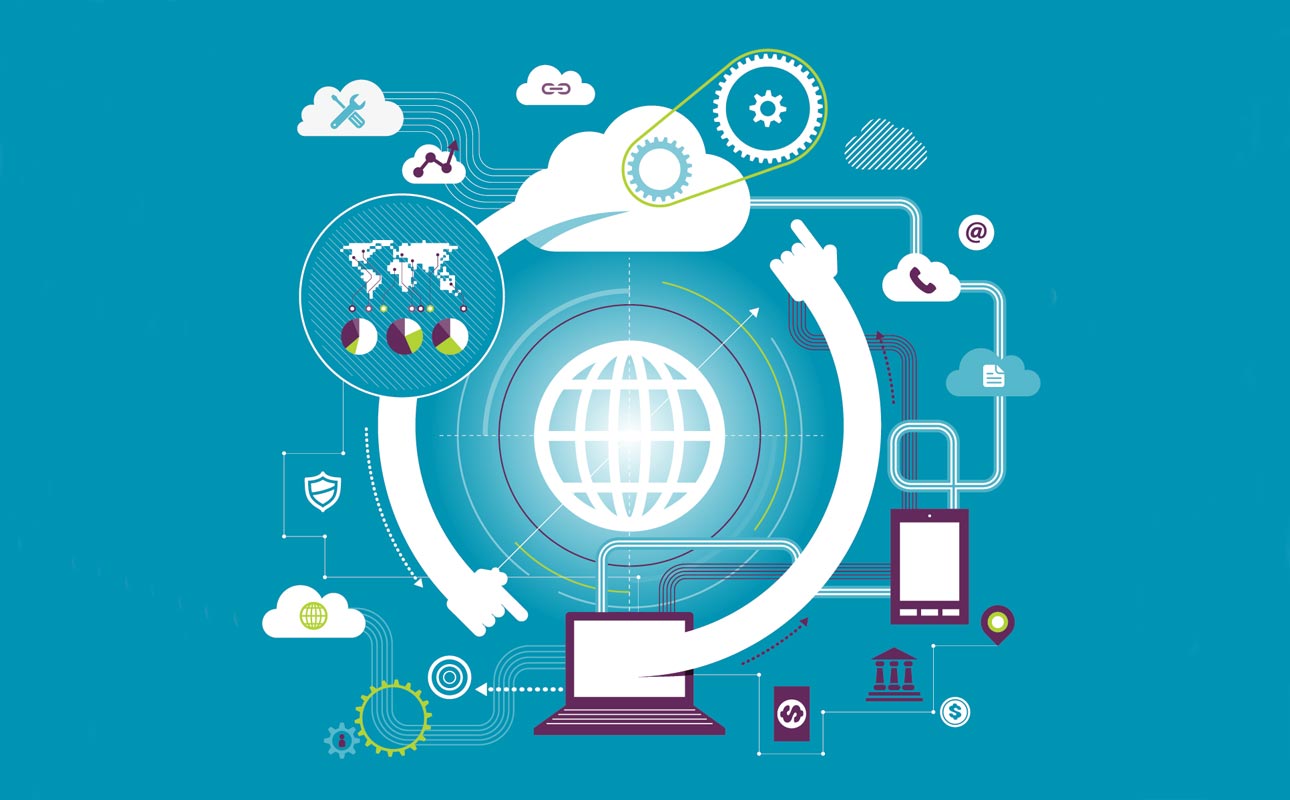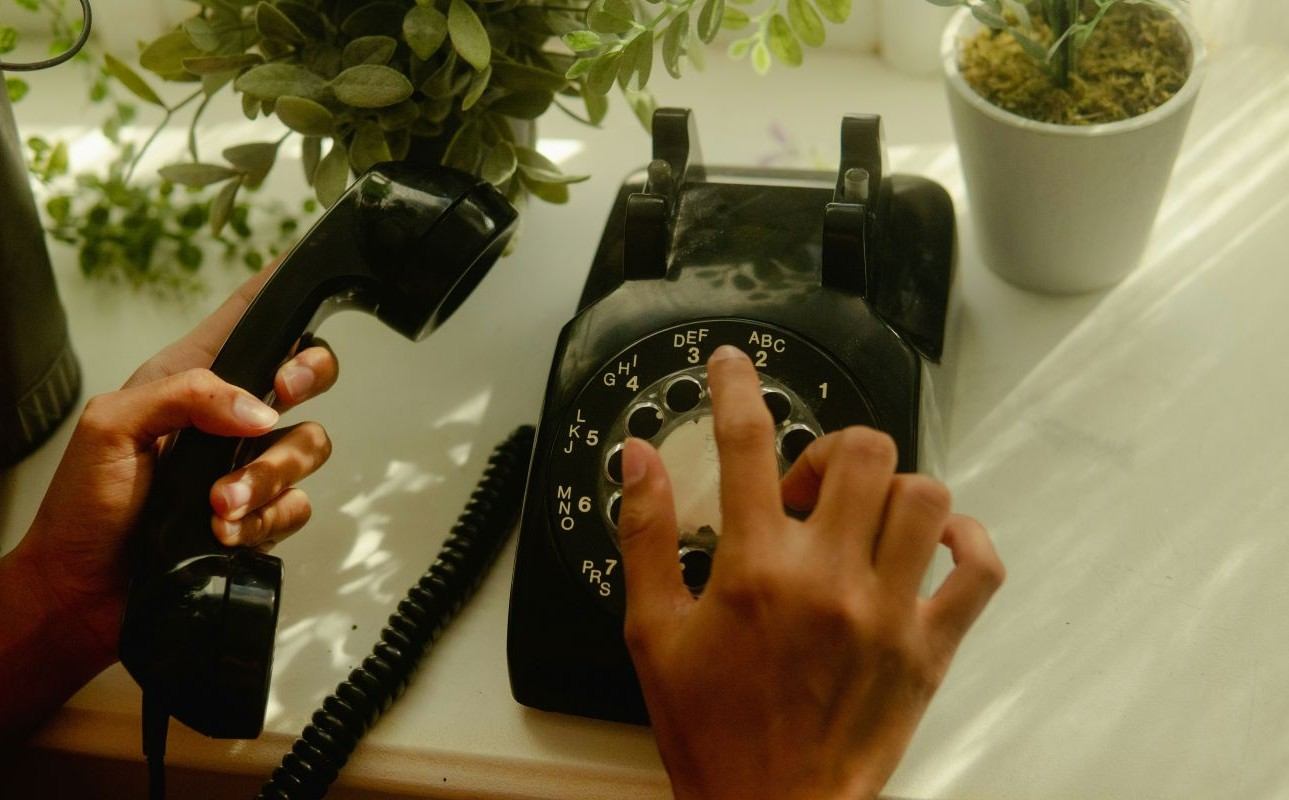The Ultimate Cell Phone Cost Comparison Timeline

In the decades since they were first introduced, cell phones have become ingrained in nearly every aspect of our daily lives. Adapting from a device to make calls on the go to a tool for everything from shopping to filing taxes, mobile phones have gone from an expensive luxury to an everyday essential. With advances in technology, changing consumer demands, and fierce competition among manufacturers, the history of mobile phone prices has followed its own trajectory, and by comparing the prices of phones over time, we can see how the industry has evolved in terms of affordability and innovation.
Ooma has created a timeline of phone prices over the past three decades to showcase some of the most iconic phones in history (with cell phone prices adjusted for inflation) and provide insight into how their prices reflect broader trends in the mobile phone market.

The timeline of mobile phones
Mobile phone history began in the early 20th century after telephones became commonplace. By this time, there was already a demand for mobile communication. In World War II, soldiers used short-range radios to communicate, a predecessor to our current walkie-talkies. In 1946, work began on the first-ever car phone. These devices took up substantial space in the vehicle’s trunk, were limited in range and use, and were mainly used for businesses rather than individuals.
Then, in 1973, Motorola engineer Dr. Martin Cooper made the first mobile phone call using a working prototype of a handheld phone, marking the inception of our modern understanding of mobile phones.
A decade later, in 1984, the Motorola DynaTAC 8000X became the first commercially available mobile phone. Nicknamed “the brick,” it weighed about 2 pounds, had a 30-minute battery life, and was priced at $3,995.
The 1990s saw the introduction of 2G digital networks in 1991, enhancing call quality and network capacity. In 1992, the first text message was sent, saying “Merry Christmas.” By 1993, the first cell phone capable of texting was released to the public, marking the beginning of SMS communication.
In 1995, T9 texting was invented, introducing predictive texting technology to reduce keystrokes. Two years later, in 1997, the first cell phone with a QWERTY keyboard was released, facilitating faster texting. The revolutionary BlackBerry pager launched in 1999, introducing devices focused on mobile productivity that allowed users to send and receive emails. The 2002 BlackBerry 5810, the first BlackBerry phone, sold for $549, equivalent to nearly $1,000 adjusted for inflation.
The release of the first iPhone in 2007 marked the transition to true smartphones. With these devices combining phones, internet access and music players in one package with a touchscreen that didn’t require a stylus, iPhones set the stage for the modern smartphones we rely on today. The iPhone’s original cost of $499 (about $750 when adjusted for inflation) was cheaper than modern versions. These days, the iPhones hover around $1,000.
Understanding the price of mobile phones over time
Mobile phone prices have shifted over time due to several key factors.
Technological advances
As technology evolved, the cost of developing, manufacturing, and distributing cell phones dropped. Better battery technology allowed phones to go from “bricks” to slim items that could fit in pockets and purses. Then, with the introduction of smartphones, these devices began to offer additional features, like high-resolution cameras, advanced processors and expansive storage.
Economies of scale
In the early days, limited production volumes kept costs high. As phones became more popular worldwide, manufacturers scaled up, and production costs decreased, allowing companies to offer more affordable models without compromising quality.
Premium pricing for flagship models
While there are undoubtedly affordable phone options, the prices of popular phone models have been increasing. Competition between large manufacturers has grown now that more people than ever own mobile devices. As a result, companies have sought to appeal to consumers with new, higher-tech features and innovative designs, leading to higher costs.
Inflation
When adjusted for inflation, many early mobile phones were significantly more expensive than the models for sale today. For example, the IBM Simon (1994) cost $1,099 at launch, or $2,431 in today’s dollars. In comparison, the iPhone 14 (2022), priced at $799 ($897 adjusted for inflation), offers far greater functionality at a lower relative cost. However, the current difficulty in sourcing materials affordably for modern cell phones has led to increased manufacturing costs and, therefore, higher pricing.
The future of mobile phones
As technology continues to evolve, the future of mobile phones and their prices will likely be shaped by innovations and changing consumer priorities.
Emerging tech
As always, smartphones are likely to continue pushing the boundaries of what pocket-sized mobile devices can do. Experts predict that phones will offer more features than ever in the coming decades, from health monitoring to AI integration, holographic displays and foldable screen capabilities.
5G and beyond
With the worldwide deployment of 5G, more people in more places around the world have access to the internet, creating opportunities in otherwise underserviced areas. However, high-speed mobile data transmission doesn’t have to stop there. In time, it’s expected that 6G will replace 5G, offering unparalleled network speeds and reduced latency for users.
Sustainability and longevity
More than ever, consumers are concerned with the environmental impact of the mobile phone industry. As a result, manufacturers will be under increased pressure to meet sustainability goals for materials, labor and production. All of these factors could potentially increase cell phone prices over time. From bulky, expensive devices to the compact smartphones of today, the industry’s progress is a testament to adaptability and innovation. But as the way we connect evolves, so should your business. At Ooma, we offer telecommunications solutions designed to meet the unique needs of small businesses. From simplifying communication to improving efficiency, we provide the tools to help your company grow and succeed. Contact us today and we’ll help you build a smarter communication system.
Cell phone prices over time
| Year, Make, and Model | Initial Cost | Adjusted for Inflation |
|---|---|---|
| 1984 – Motorola DynaTAC 8000X | $3,995 | $12,369 |
| 1989 – Motorola MicroTAC | $2,995 | $7,803 |
| Aug. 1994 – IBM Simon | $1,099 | $2,431 |
| Jan. 1996 – Motorola StarTAC | $1,000 | $2,043 |
| Oct. 1999 – Nokia 8210 | $250 | $478 |
| Sept. 2000 – Nokia 3310 | $162 | $290 |
| April 2001 – Motorola V60 | $300 | $533 |
| Oct. 2001 – Nokia 5510 | $362 | $643 |
| March 2002 – BlackBerry 5810 | $549 | $969 |
| Aug. 2003 – Nokia 1100 | $100 | $171 |
| Oct. 2003 – Nokia 6600 | $620 | $1,057 |
| Oct. 2003 – Nokia N-Gage | $299 | $510 |
| April 2004 – Nokia 2600 | $150 | $248 |
| May 2004 – Sony Ericsson K300 | $200 | $341 |
| Nov. 2004 – Motorola RAZR V3 | $449 | $711 |
| June 2005 – Nokia 1110 | $67 | $106 |
| Sept. 2005 – Nokia 1600 | $90 | $143 |
| May 2006 – Motorola Q | $150 | $237 |
| Sept. 2006 – BlackBerry Pearl | $435 | $680 |
| Jan. 2007 – LG Prada | $849 | $1,323 |
| March 2007 – Nokia N95 | $730 | $1,105 |
| June 2007 – Apple iPhone | $499 | $606 |
| July 2008 – Apple iPhone 3G | $299 (16GB with 2-year contract) | $447 |
| Oct. 2008 – LG Prada II | $549 | $821 |
| Nov. 2009 – Nokia 5230 | $154 | $225 |
| June 2010 – Apple iPhone 4 | $599 (16 GB) | $867 |
| June 2010 – Samsung Galaxy S | $399 | $578 |
| Sept. 2010 – Nokia N8 | $549 | $795 |
| May 2011 – Samsung Galaxy S II | $649 | $907 |
| Oct. 2011 – Apple iPhone 4S | $649 (16 GB) | $907 |
| Nov. 2011 – Nokia Lumia 800 | $466 | $675 |
| May 2012 – Samsung Galaxy S III | $599 | $824 |
| Sept. 2012 – iPhone 5 | $649 (16 GB) | $885 |
| April 2013 – Samsung Galaxy S4 | $579 (16 GB) | $782 |
| April 2014 – Samsung Galaxy S5 | $650 (64 GB) | $860 |
| Sept. 2014 – Apple iPhone 6 | $749 (64 GB) | $1,000 |
| April 2015 – Samsung Galaxy S6 Edge | $750 (64 GB) | $1,000 |
| March 2016 – Samsung Galaxy S7 | $795 (128 GB) | $1,044 |
| Sept. 2016 – Apple iPhone 7 | $749 (128 GB) | $979 |
| Nov. 2016 – Huawei Mate 9 | $599 (64 GB) | $783 |
| April 2017 – Samsung Galaxy S8 | $850 (256 GB) | $1,096 |
| Sept. 2017 – Apple iPhone 8 | $849 (256 GB) | $1,095 |
| Nov. 2017 – Apple iPhone X | $1,149 (256 GB) | $2,148 |
| April 2018 – Samsung Galaxy S9 | $819 (256 GB) | $1,031 |
| Sept. 2018 – Apple iPhone XS | $1,149 (256 GB) | $1,447 |
| Oct. 2018 – Apple iPhone XR | $899 (256 GB) | $1,132 |
| March 2019 – Samsung Galaxy S10 | $899 (128 GB) | $1,110 |
| Sept. 2019 – Apple iPhone 11 | $749 (128 GB) | $925 |
Source



